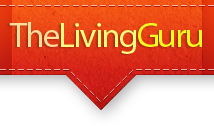 Posted on Nov 5th, 2011 | 0 comments
Posted on Nov 5th, 2011 | 0 comments 

Do you know how much physical activity do adults aged 19-64 years old need to do to keep healthy?
To stay healthy or to improve health, adults need 2 types of physical activities each week: aerobic and muscle-strengthening.
How much physical activity you need to do each week depends on your age.
[Note : Coming up in March 2012 – new links below for the recommendations for other age groups:
- early childhood (under 5 years old)
- young people (5-18 years old)
- older adults (65 and over)]
Physical activity for adults aged 19-64
To stay healthy, adults aged 19-64 should try to be active daily and should do:
At least 150 minutes (2 hours and 30 minutes) of moderate-intensity aerobic activity such as cycling or fast walking every week, and muscle-strengthening activities on 2 or more days a week that work all major muscle groups (legs, hips, back, abdomen, chest, shoulders and arms) – OR –
75 minutes (1 hour and 15 minutes) of vigorous-intensity aerobic activity such as running or a game of singles tennis every week, and muscle-strengthening activities on 2 or more days a week that work all major muscle groups (legs, hips, back, abdomen, chest, shoulders and arms). – OR –
An equivalent mix of moderate- and vigorous-intensity aerobic activity every week (for example 2 30-minute runs plus 30 minutes of fast walking), and muscle-strengthening activities on 2 or more days a week that work all major muscle groups (legs, hips, back, abdomen, chest, shoulders and arms).
What counts as moderate-intensity aerobic activity?
Examples of activities that require moderate effort for most people include:
- walking fast
- water aerobics
- riding a bike on level ground or with few hills
- doubles tennis
- pushing a lawn mower
- hiking
- skateboarding
- rollerblading
- volleyball
- basketball
Moderate-intensity aerobic activity means you’re working hard enough to raise your heart rate and break a sweat. One way to tell if you’re working at a moderate intensity is if you can still talk, but you can’t sing the words to a song.
What counts as vigorous-intensity aerobic activity?
Examples of activities that require vigorous effort for most people include:
- aerobics
- gymnastics
- martial arts
Vigorous-intensity aerobic activity means you’re breathing hard and fast, and your heart rate has gone up quite a bit. If you’re working at this level, you won’t be able to say more than a few words without pausing for a breath.
In general, 75 minutes of vigorous-intensity activity can give similar health benefits to 150 minutes of moderate-intensity activity.
What counts as muscle-strengthening activity?
Muscle-strengthening exercises are counted in repetitions and sets. A repetition is 1 complete movement of an activity, like lifting a weight or doing a sit-up. A set is a group of repetitions.
For each activity, try to do 8 to 12 repetitions in each set. Try to do at least 1 set of each muscle-strengthening activity. You’ll get even more benefits if you do 2 or 3 sets.
Adults who are overweight can improve their health by meeting the activity guidelines, even if they don’t lose weight.
To lose weight, you are likely to need to do more than 150 minutes a week and make changes to your diet.
Start by gradually building up towards 150 minutes of moderate-intensity aerobic activity a week.
To get health benefits from muscle-strengthening activities, you should do them to the point where you struggle to complete another repetition.
There are many ways you can strengthen your muscles, whether it’s at home or in the gym. Examples of muscle-strengthening activities for most people include:
- lifting weights
- working with resistance bands
- doing exercises that use your body weight for resistance, such as push-ups and sit-ups
- heavy gardening, such as digging and shovelling
- yoga
You can do activities that strengthen your muscles on the same day or on different days as your aerobic activity, whatever’s best for you.
However, muscle-strengthening activities don’t count towards your aerobic activity total, so you’ll need to do them in addition to your aerobic activity.
Some vigorous-intensity aerobic activities may provide 75 minutes of aerobic activity and sufficient muscle-strengthening activity. Examples include circuit training and sports such as football or rugby.






 Leave a Reply
Leave a Reply 






